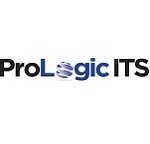Evaluating Technology Needs Using the CIPP Model
Evaluating Technology Needs Using the CIPP Model
By Jennifer Roeder, ProLogic ITS
Let us agree our focus is centered around developing fluid, quality instruction using technology for our students. As parents, teachers, administration, and staff, we all want our next generation of learners to prepare for ever-changing professional environments. The evolution of workplace shift is creating an uptick for developing curriculum and practice integrated with technology.
Four questions steer the conversation for refreshing or evaluating technology:
- What hardware and software best suit our needs?
- How do we implement it?
- Is it being used with fidelity?
- What is the outcome?
Acknowledging there is no crystal ball to see into the future, we must dig deeper to assess the choices available and create the one, three, and five-year strategic plans designed for student success outcomes. Considerations need to include budgets, professional development, support options, student/teacher retention, and measured means to determine investment success.
The CIPP (Context, Input, Process, and Product evaluation) is one model relevant to create a decision and management-oriented discussions. After reviewing the four areas, schools can identify essential components to develop an assessment of needs. Starting with context evaluation, evaluators examine the program's resources and background, such as the scope of the review and supports the program has in place. Including overarching goals, exploring background information, and cultural context are all components pertinent during this stage. Once the plans are assessed, evaluators can move into the input evaluation stage of the model. The review focuses on identifying the key stakeholders and examining the program budget during the input evaluation stage. This stage also collects information about planning and strategies for implementation, including human resources and timeline. During the third stage of process evaluation, the program's activities are assessed to focus on continuous improvement. What is being done, is it being done well, and what needs to be addressed for change? Finally, evaluators using CIPP measure the program's outcomes and how effectively those outcomes are addressed.

Currently, most schools are experiencing a reaction mode to the forced adaptation to COVID-19. However, the four aspects of the CIPP Evaluation Model are a framework to evaluate: What needs to be done (Context)? How should it be done (Input)? Is it being done (Process)? Did it succeed (Product)? The CIPP Evaluation Model provides a big picture overview and the component overview to evaluate better, account for, and improve upon, the reforming current educational technology addition process.
 Jennifer Roeder is a former elementary school teacher of six years from Cherokee County, Ga. She shares her passion for the implementation of integrated classroom technology, school technology, and professional development. She holds certifications as a Promethean Certified Teacher and a Microsoft Innovative Educator. Jennifer is proud to be part of the ProLogic ITS team focusing on current school technology integration and STEM education.
Jennifer Roeder is a former elementary school teacher of six years from Cherokee County, Ga. She shares her passion for the implementation of integrated classroom technology, school technology, and professional development. She holds certifications as a Promethean Certified Teacher and a Microsoft Innovative Educator. Jennifer is proud to be part of the ProLogic ITS team focusing on current school technology integration and STEM education.
Source Attributions:
Daniel L. Stufflebeam, "CIPP Evaluation Model (Context, Input, Process, Product)" in the International Handbook Of Educational Evaluation, published by Springer International Handbooks of Education, December 2002. ISBN-13: 978-1402008498
Daniel L. Stufflebeam, "CIPP Evaluation Model Checklist" in the National Youth Leadership Council (NYLC) Resource Centre, published June 2002. Retrieved from http://www.nylc.org/sites/nylc.org/files/files/250CIPP.pdf
Amber Danielle Mazur and Christine Miller, "The CIPP Evaluation Model: A Summary" in AmberMazur Blog: A Journey Through The Evolution Of Educational Technologies, published June 2013. Retrieved from https://ambermazur.wordpress.com/2013/06/10/the-cipp-evaluation-model-a-summary/
Guili Zhang, Nancy Zeller, Robin Griffith, Debbie Metcalf, Jennifer Williams, Christine Shea, and Katherine Misulis, of East Carolina University, "Using The Context, Input, Process, And Product Evaluation Model (CIPP) As A Comprehensive Framework To Guide The Planning, Implementation, And Assessment Of Service-Learning Programs" in the Journal of Higher Education Outreach and Engagement, Volume 15, Number 4, Page 57, published by the University of Georgia, 4th Quarter 2011. Retrieved from http://files.eric.ed.gov/fulltext/EJ957107.pdf

